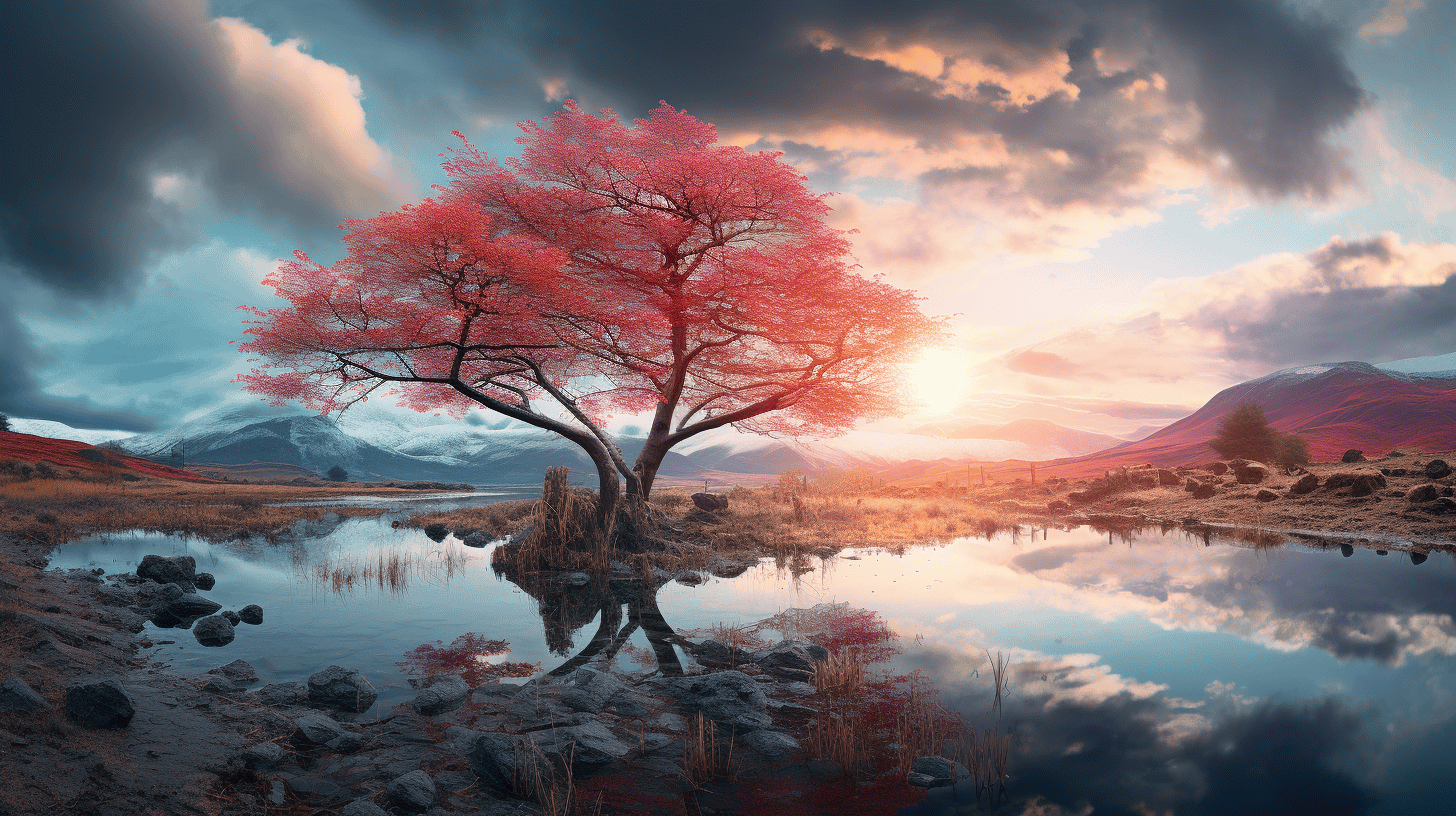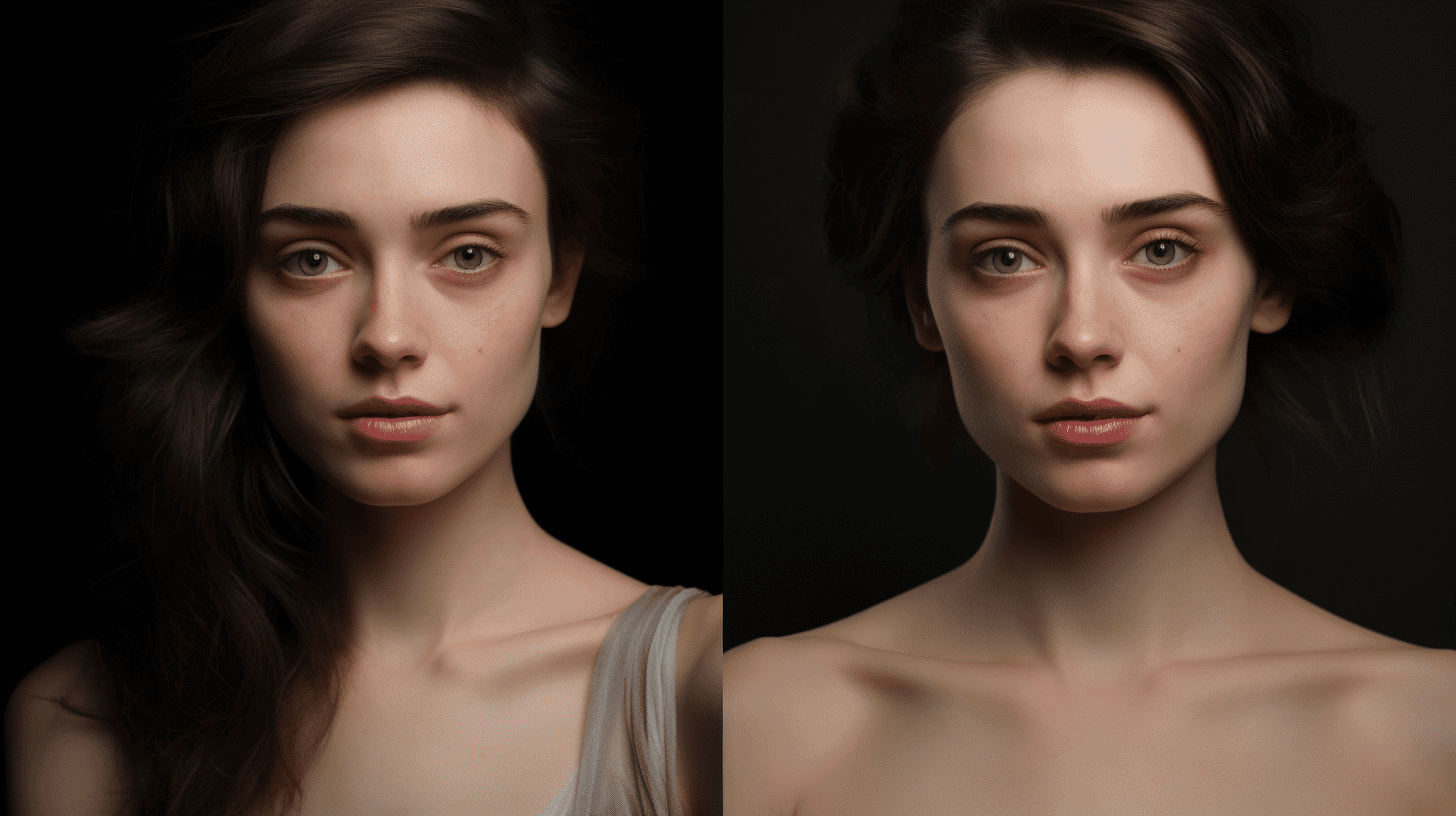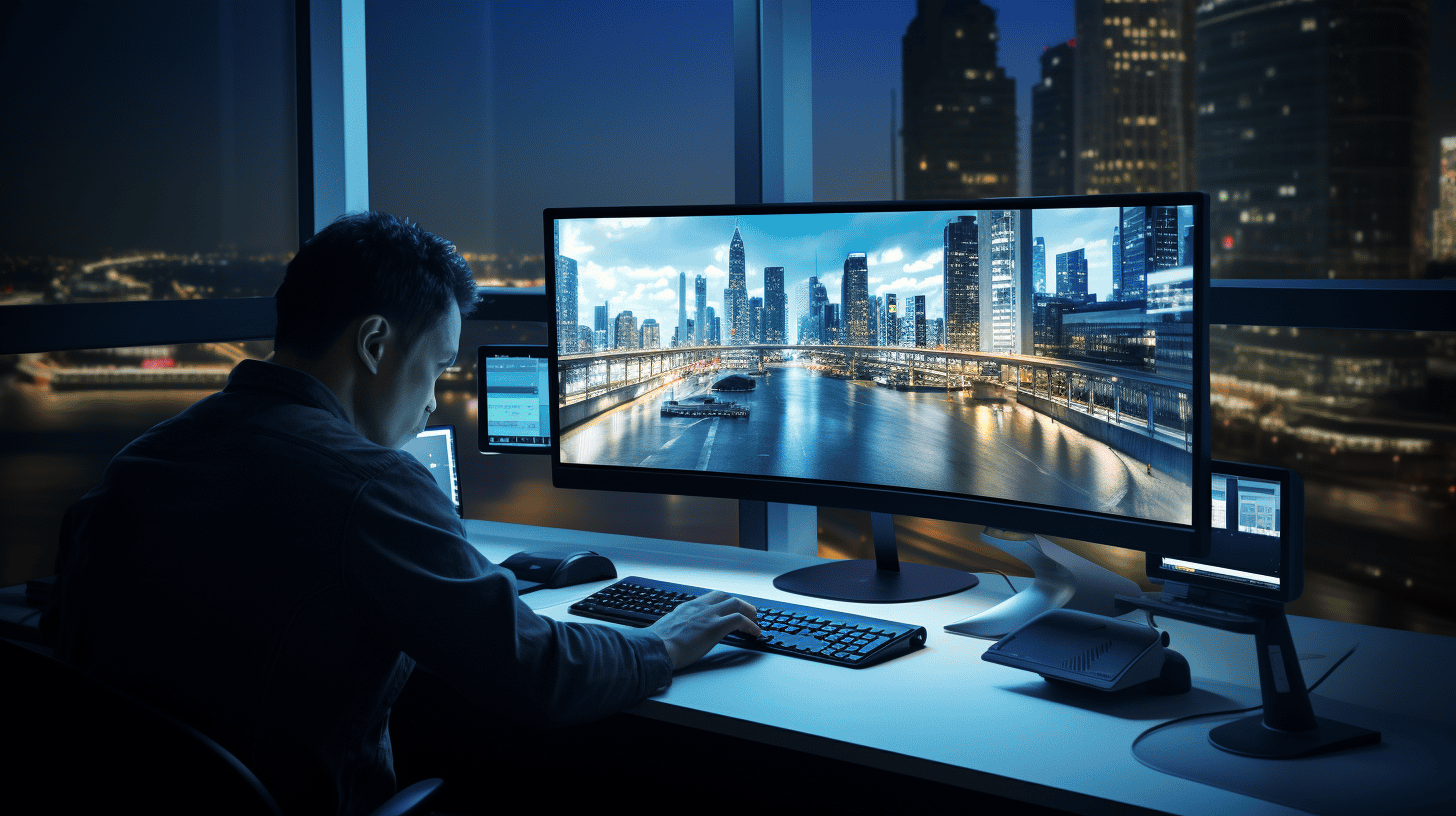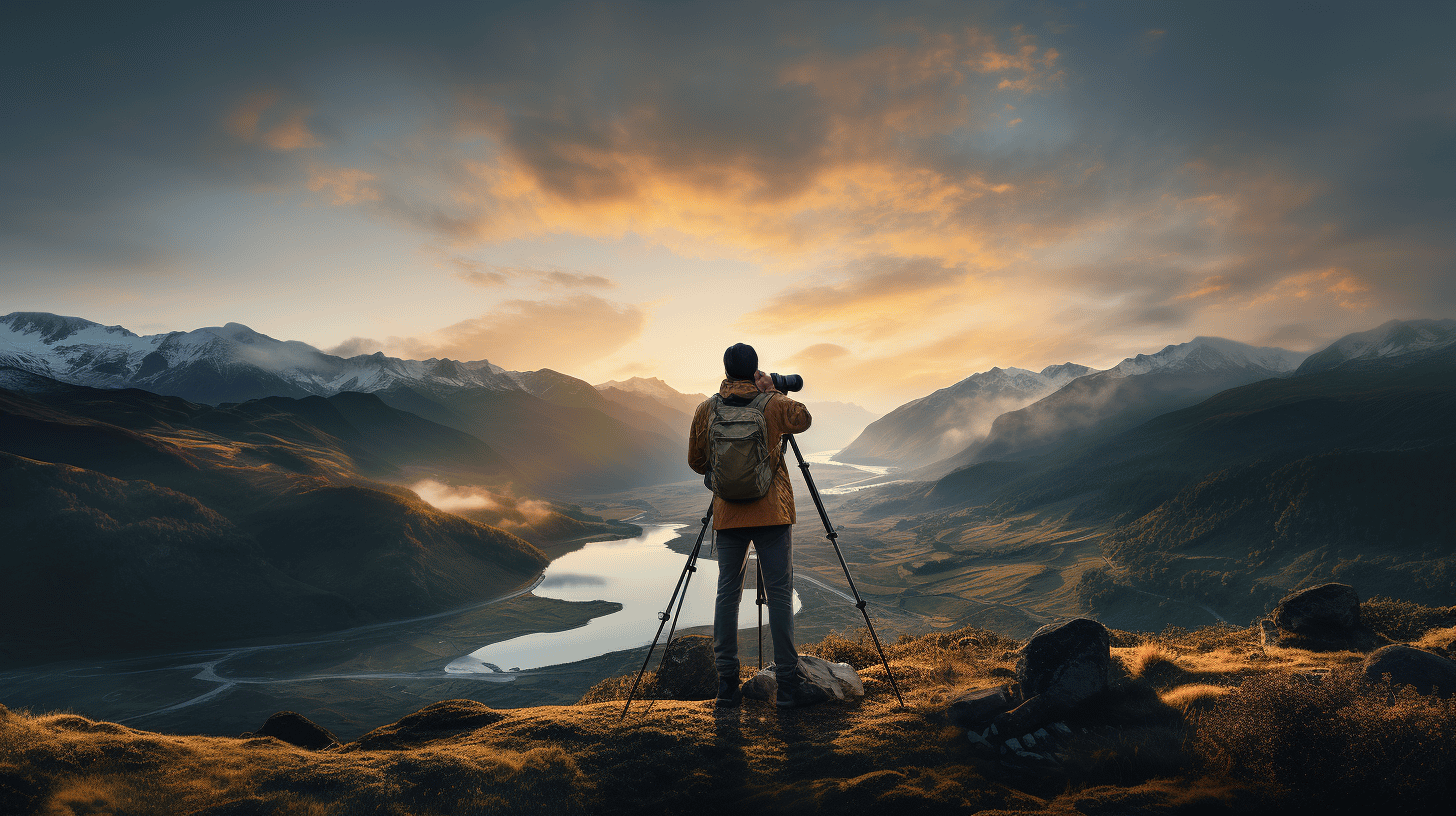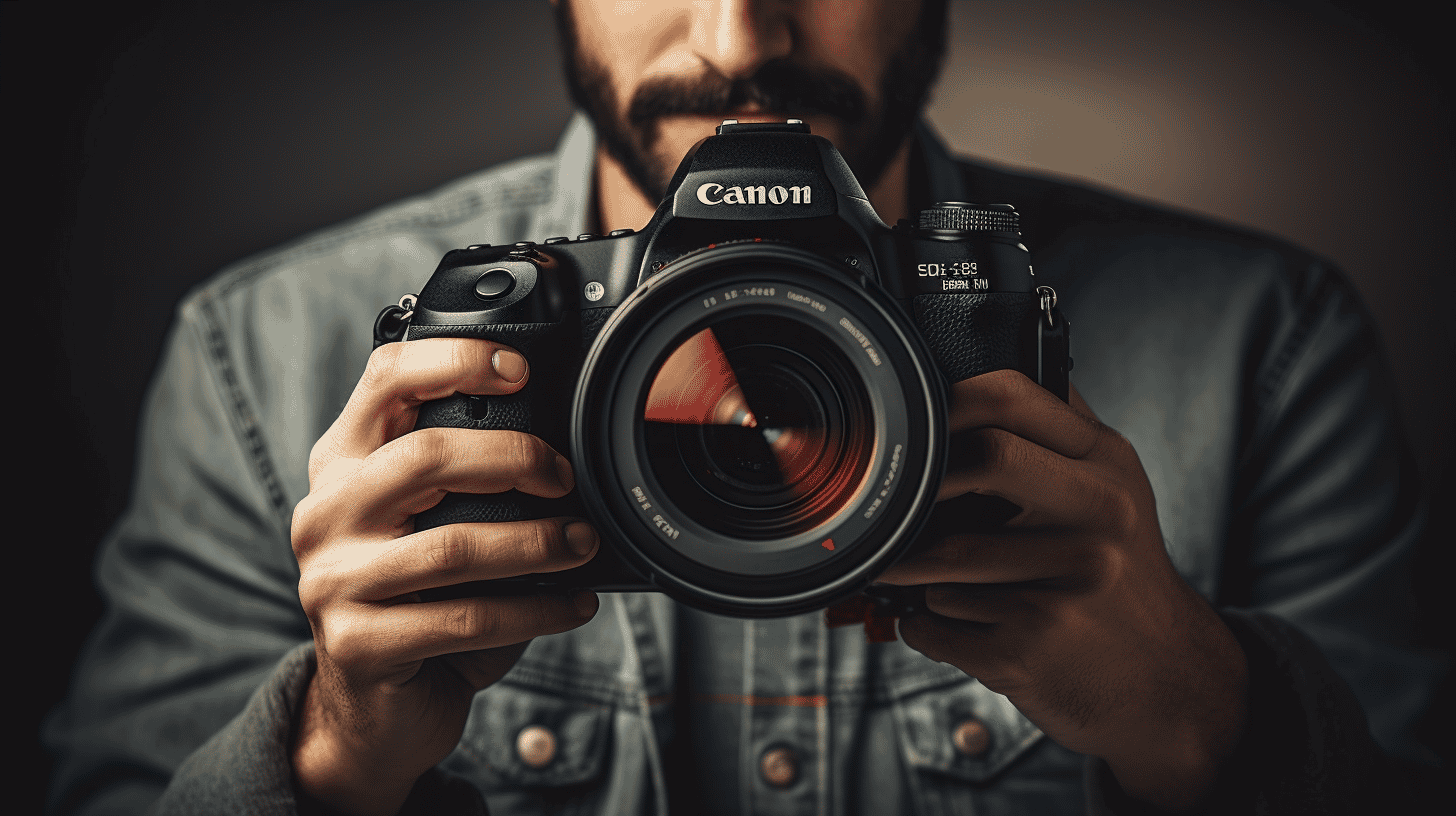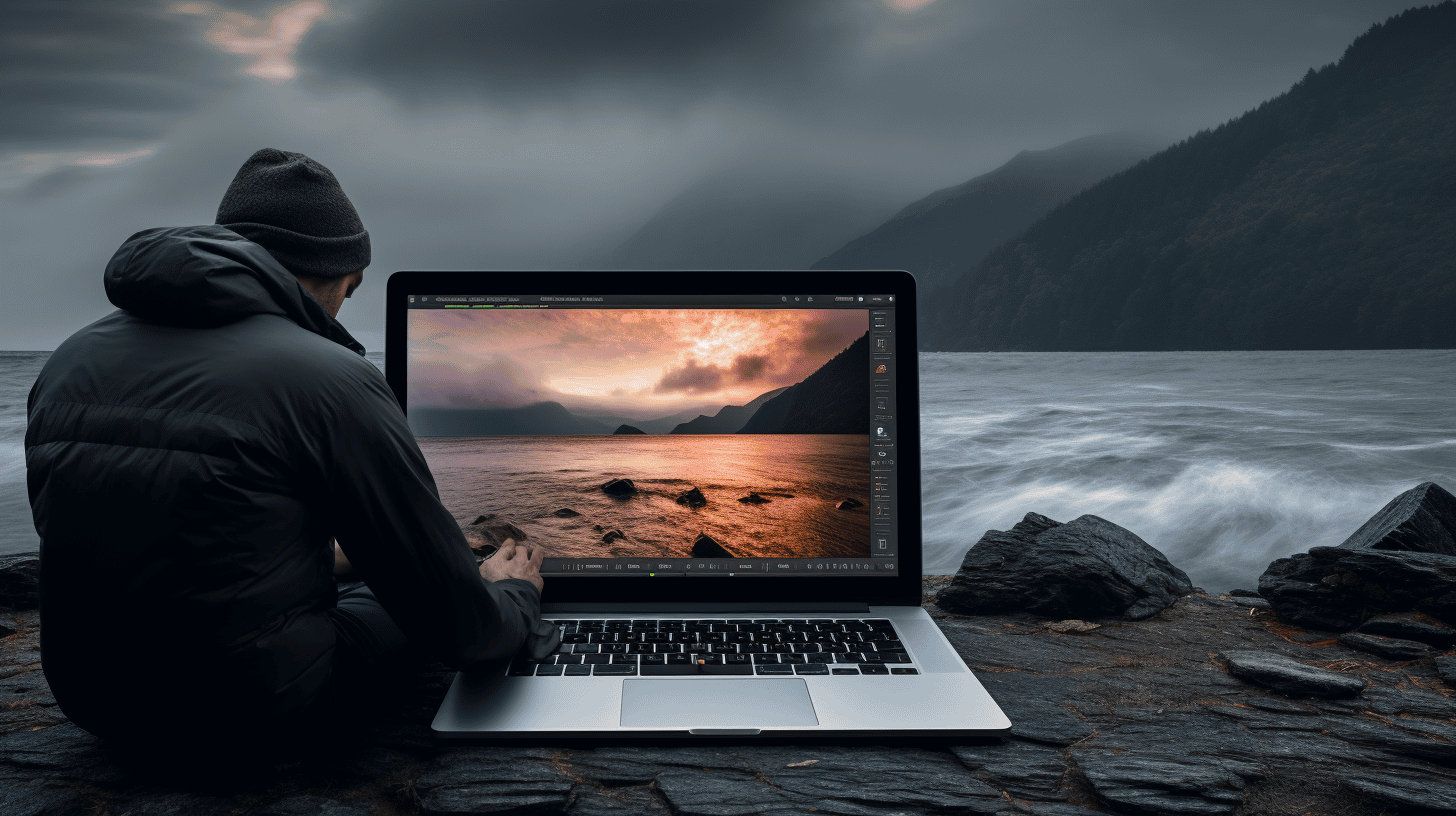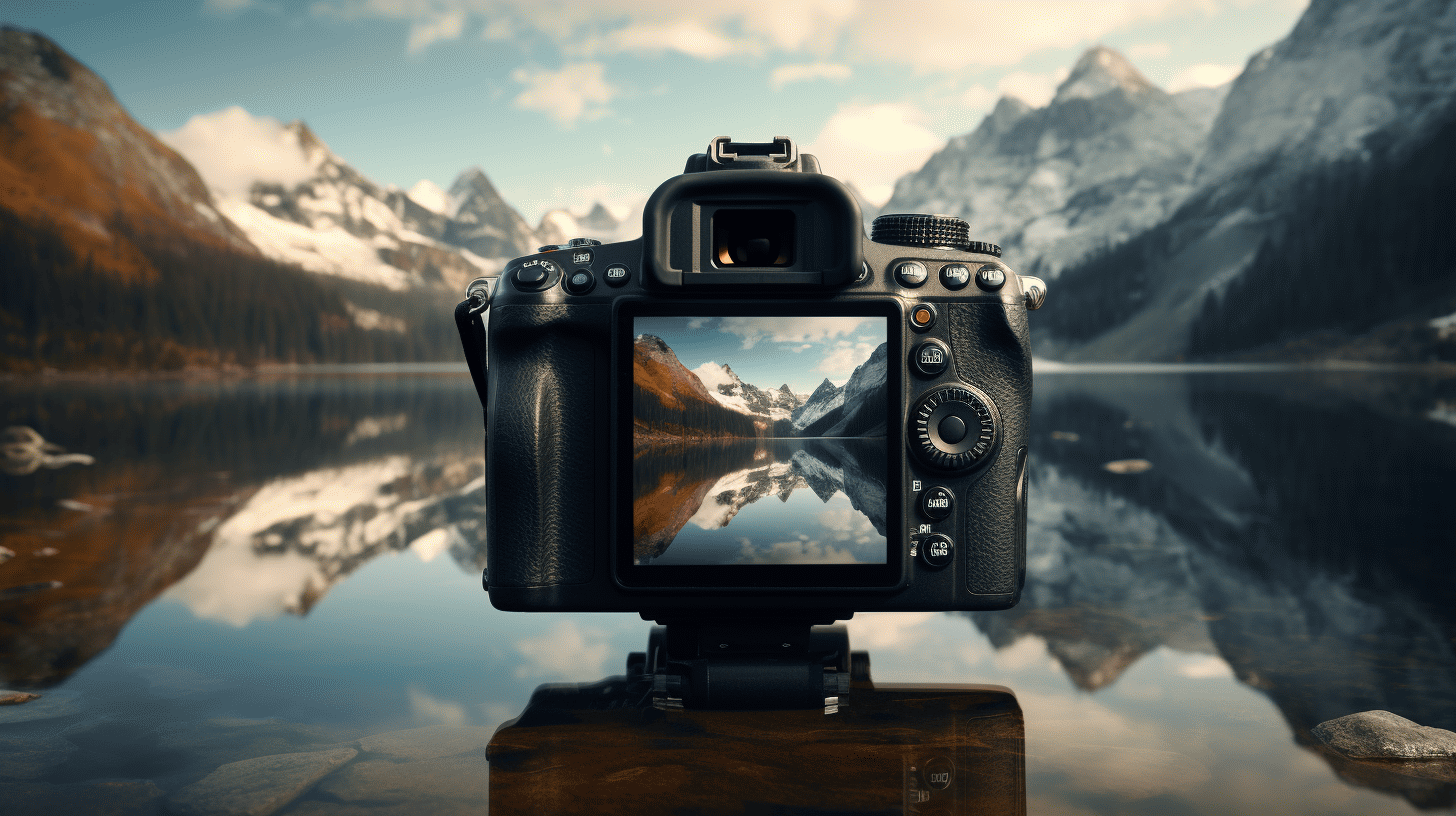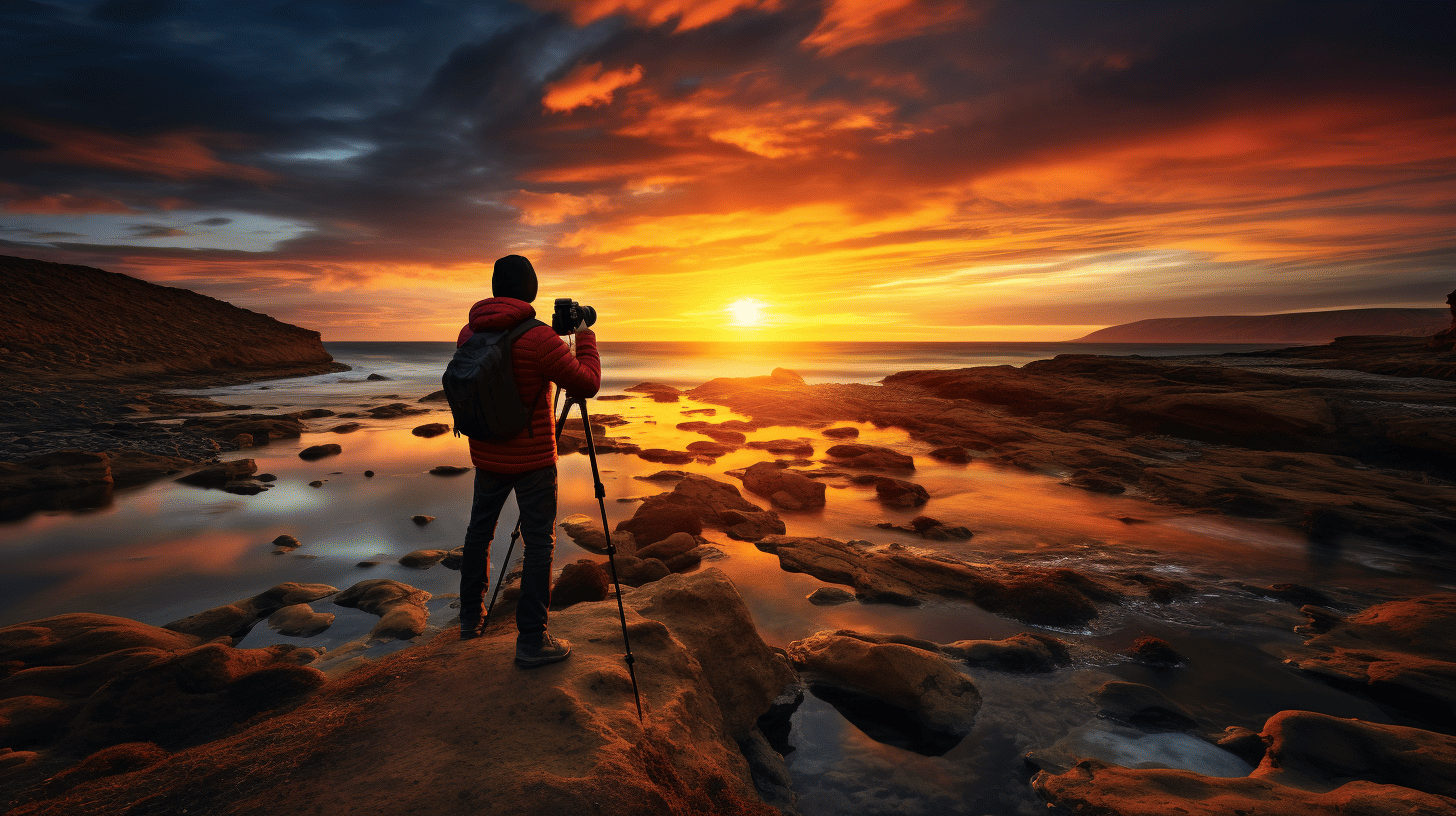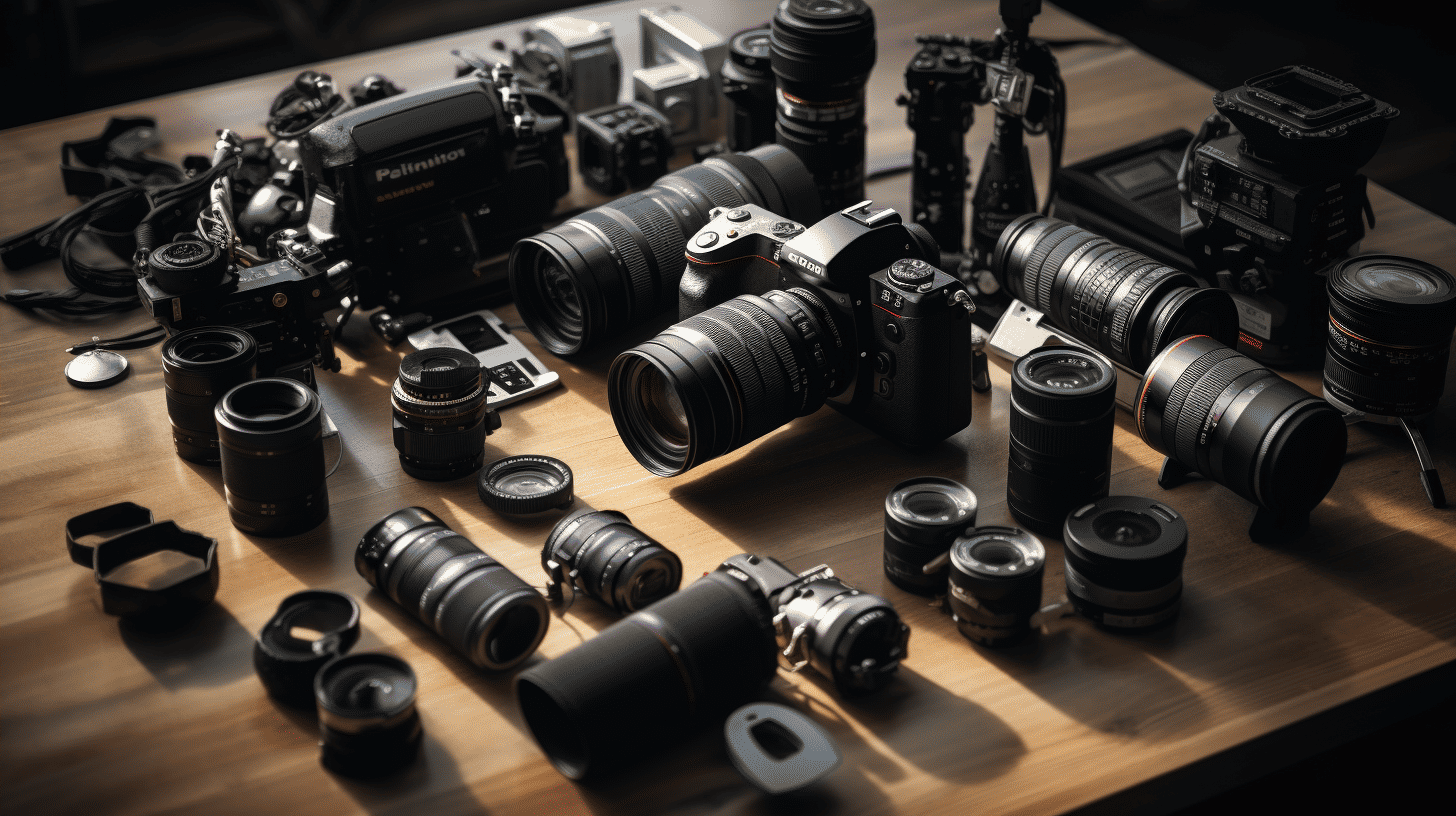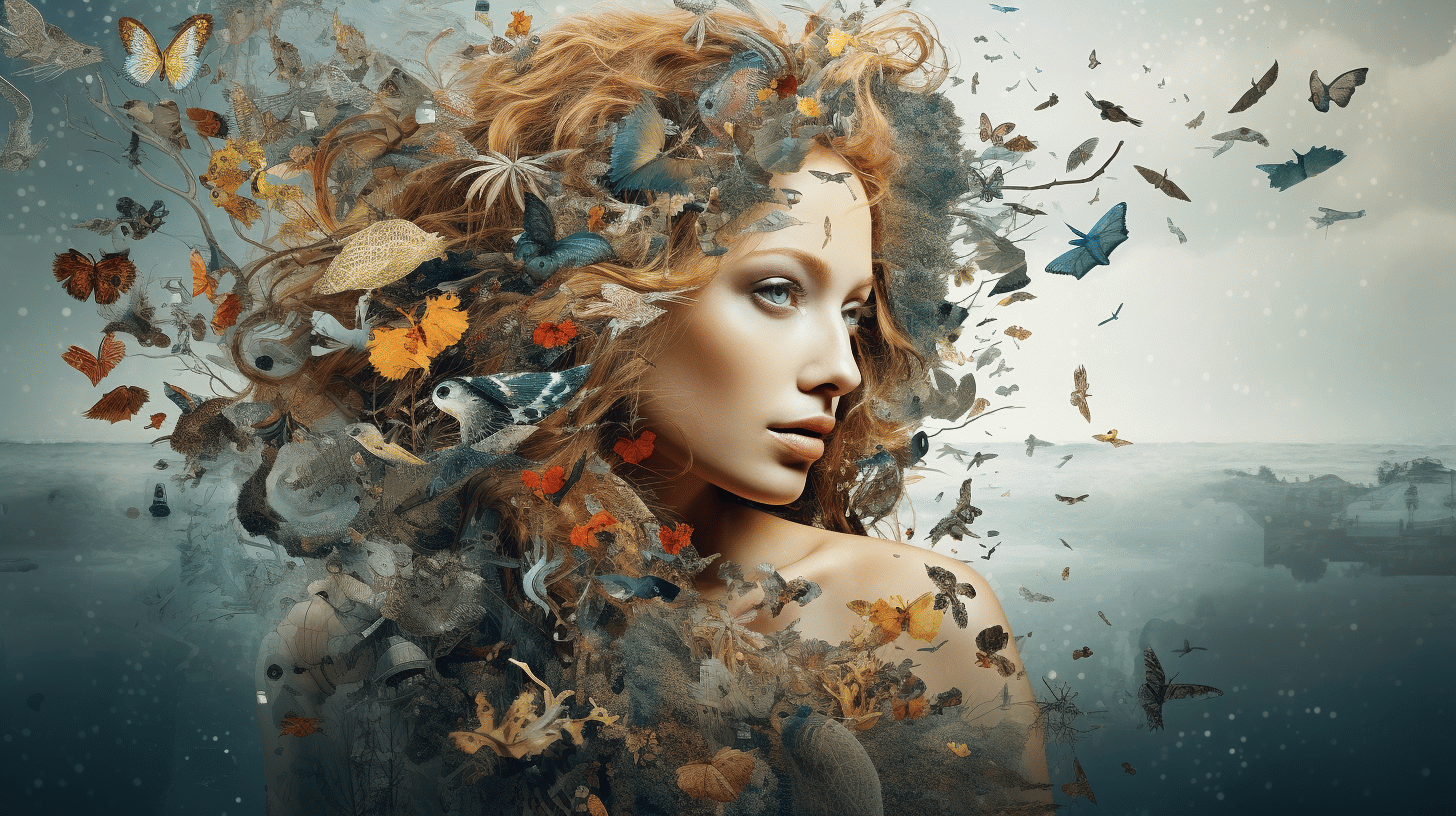Imagine being able to transform your landscape photography with cutting-edge technology that pushes the boundaries of what was previously possible. Thanks to advancements in artificial intelligence (AI), this is now a reality. AI-driven techniques are revolutionizing the world of photography, enabling photographers to capture breathtaking images with greater ease and creativity.
In this article, we will explore the impact of AI in landscape photography and how it is reshaping the way photographers approach their craft. From automatic image adjustments to intelligent composition suggestions, AI is enhancing the capabilities of photographers and bringing new possibilities to the forefront.
But before diving into the details, let’s take a step back and understand the role of AI in landscape photography. AI refers to the ability of machines to simulate and mimic human intelligence, enabling them to perform tasks that would typically require human intelligence. Through the use of algorithms and machine learning, AI can analyze and interpret vast amounts of data to make informed decisions and predictions.
Now, imagine harnessing this power to enhance your landscape photography. AI can automate tedious tasks, improve image quality, suggest creative compositions, and even inspire new artistic expressions. It serves as a valuable tool that empowers photographers to unleash their creativity and achieve their artistic vision.
Throughout this article, we will delve into the various aspects of AI in landscape photography, exploring its potential, ethical considerations, and its impact on the photography industry. Get ready to unlock a world of possibilities as we dive into the transformative power of AI-driven techniques in landscape photography.
The Impact of AI in Landscape Photography
In the ever-evolving world of photography, AI (Artificial Intelligence) is making its mark. It has revolutionized various aspects of the art, and landscape photography is no exception. AI algorithms have brought about significant advancements that have revolutionized the way landscape photographs are taken and processed. From automatic image adjustments to enhanced details and colors, AI has truly made its presence known.
Automatic Image Adjustments
One of the most compelling aspects of AI in landscape photography is its ability to automatically adjust various image parameters. With AI algorithms, photographers can now effortlessly fine-tune exposure, contrast, and color balance. This means that even novice photographers can capture breathtaking landscapes without needing extensive post-processing expertise. AI takes care of the nitty-gritty details, resulting in stunning, professional-looking images with minimal effort.
Enhanced Details and Colors
AI brings out the fine details and vibrant colors that can mesmerize viewers in landscape photography. By analyzing patterns and textures within an image, AI algorithms can enhance the visual appeal of photographs. From emphasizing intricate patterns in rock formations to bringing out the vivid hues of a sunset, AI adds an element of depth and richness to landscape photographs. With AI at their disposal, photographers can capture stunning landscapes that truly pop with life and vibrancy.
Boosting Creativity
AI not only enhances the technical aspects of landscape photography but also boosts creativity. With AI-driven editing tools and filters, photographers have an array of options to experiment with to achieve their desired artistic vision. From applying unique styles to transforming images with surreal effects, AI empowers photographers to express their creativity in new and exciting ways. The possibilities are endless, allowing photographers to push boundaries and create visually captivating landscape photographs that stand out from the crowd.
With the help of AI, landscape photography has entered a new era. It has become more accessible, efficient, and creative, empowering photographers of all levels to capture stunning shots. The integration of AI algorithms in landscape photography has truly transformed the art form, opening up a world of possibilities for photographers to explore and create. Embracing AI in landscape photography is undoubtedly a game-changer, and its impact will continue to shape the future of this captivating genre.
To learn more about the exciting world of AI-driven techniques in landscape photography, check out this article on AI in Landscape Photography.
Revolution in Photography with AI-driven Techniques
The rapid advancement of technology has revolutionized many industries, and photography is no exception. In recent years, AI-driven techniques have emerged as a game-changer, bringing about significant changes in image quality and creativity. With the help of artificial intelligence, photographers can now push the boundaries of their artistry and produce stunning visuals that were once unimaginable.
Automatic Image Enhancement
One of the most impactful applications of AI in photography is automatic image enhancement. Traditionally, photographers would spend hours meticulously editing their images to achieve the desired look. However, with AI algorithms, this laborious process is simplified and made more accessible for photographers of all skill levels.
Using sophisticated machine learning algorithms, AI-powered software can analyze an image and automatically enhance its various aspects. From adjusting exposure and contrast to optimizing colors and tones, AI can transform ordinary photos into visually striking masterpieces with just a few clicks.
But how does this technology work? AI algorithms analyze vast amounts of image data to learn patterns and understand what makes a visually appealing photograph. By comparing an input image to a database of well-edited images, AI can make intelligent adjustments to enhance the overall quality while preserving the original intent of the photographer.
The benefits of automatic image enhancement are numerous:
- Time-saving: With AI-driven software, photographers can now spend less time on post-processing and more time on capturing breathtaking moments.
- Consistency: AI algorithms provide consistent results, ensuring that photographers can achieve a uniform style across their portfolio.
- Accessibility: Automatic image enhancement democratizes photography by making advanced editing techniques accessible to a wider audience, regardless of their technical expertise.
- Creative exploration: By taking care of the technical aspects, photographers can focus on their creative vision and explore new artistic territories.
Intelligent Composition Suggestions
AI-driven techniques go beyond image enhancement; they also offer intelligent composition suggestions, allowing photographers to take their creativity to new heights. Composition is a crucial element in photography, as it determines how viewers will perceive and interpret an image. With AI’s guidance, photographers can now experiment with composition ideas and discover fresh perspectives.
AI algorithms analyze compositional principles and their application in a vast array of images to provide photographers with valuable suggestions. From rule of thirds and leading lines to balance and symmetry, AI can identify and recommend compositional elements that will enhance the visual impact of a photograph.
These intelligent composition suggestions empower photographers to break free from conventional notions and explore innovative ways of framing their subjects. By embracing AI-driven technology, photographers can expand their creative horizons and produce captivating visuals that captivate audiences.
In conclusion, AI-driven techniques are revolutionizing photography by offering automatic image enhancement and intelligent composition suggestions. With the help of AI algorithms, photographers can save time, maintain consistency, explore new creative possibilities, and ultimately, produce visually stunning images. Embracing AI in photography opens up a world of possibilities, enabling photographers to unlock their full creative potential. To learn more about the revolution in photography with AI, visit here.
AI in Photography: A Global Perspective
Photography has always been an art form that transcends boundaries and connects people from different corners of the globe. With the advent of artificial intelligence (AI), the world of photography is experiencing a revolutionary transformation. AI programs are not only revolutionizing the way photos are taken and edited but also considering regional styles and profiles of photographers worldwide[1].
In today’s globalized world, photographers draw inspiration from diverse cultures and aesthetics. AI-driven photography tools recognize this and adapt to the unique preferences and trends in different regions. For instance, a photographer in Japan might focus on capturing the delicate beauty of cherry blossoms, while a photographer in Brazil might aim to capture the vibrancy of carnival celebrations. AI algorithms seamlessly adjust to these stylistic nuances and enhance the photographer’s vision.
Here are some fascinating ways AI programs are breaking new grounds in the industry on a global scale:
1. Style Transfer
AI-powered photography tools can analyze popular photography styles from around the world and apply them to images instantaneously. Whether it’s emulating the vintage look of a New York street photographer or replicating the vibrant colors of a Bollywood film, AI algorithms can effortlessly transform any photo to match the desired style.
2. Intelligent Editing
Editing is an integral part of the photography process, and AI programs excel in this aspect. By analyzing millions of images, AI algorithms can identify patterns and automatically enhance specific elements in a photo. From adjusting exposure and color balance to removing unwanted objects or applying filters, AI-driven editing tools save photographers valuable time and enable them to focus more on their creative vision.
3. Global Marketplaces and Collaboration
The rise of online platforms and marketplaces has made it easier for photographers from different parts of the world to connect, collaborate, and share their work. AI platforms are also leveraging this global network, allowing photographers to gain exposure to diverse audiences and learn from each other’s experiences. This interconnectedness is fostering a sense of community among photographers worldwide.
4. Accessibility and Inclusion
AI-driven photography tools are also making the art form more accessible to individuals who may not have traditional photography skills or access to expensive equipment. With AI-powered smartphones and applications, anyone can capture stunning images effortlessly. This inclusivity is democratizing photography and empowering individuals from all walks of life to express their creativity.
In conclusion, the impact of AI in photography is not limited to a particular region or style. It is a global force that is revolutionizing the way we capture, edit, and appreciate images. Whether you’re a professional photographer or an amateur enthusiast, embracing AI-powered tools can enhance your creativity and open up a world of possibilities.
Read More: AI in Photography Globally
The Ethical Side of AI in Photography
Artificial Intelligence (AI) has revolutionized numerous industries, and photography is no exception. AI-powered cameras and editing software have made capturing and enhancing images easier than ever before. However, as with any technological advancement, there are ethical implications to consider. In this article, we will delve into the ethical challenges and opportunities presented by AI in photography.
Ethical Challenges in AI-driven Photography
The integration of AI in photography brings forth a range of ethical considerations. Here are some of the key challenges to be aware of:
- Privacy Concerns: AI-powered cameras and surveillance systems have raised concerns about privacy violations. With advanced facial recognition capabilities, there is a potential for invasive data collection or even the misuse of personal information.
- Bias and Discrimination: AI algorithms may inadvertently perpetuate biases and discriminatory practices in photography. Gender and racial biases have been uncovered in facial recognition systems, leading to potential harm and perpetuation of stereotypes.
- Intellectual Property: AI technology can generate highly realistic images, raising questions about copyright and intellectual property. How do we navigate the rights and ownership of AI-generated photographs?
Opportunities for Ethics in AI-driven Photography
While there are ethical challenges to address, AI in photography also opens up new possibilities for ethical practices and enhanced creativity:
- Accessibility and Inclusivity: AI can help democratize photography by making it more accessible to people with disabilities. For example, AI-powered cameras equipped with voice recognition can empower visually impaired individuals to capture photos independently.
- Automated Content Moderation: In an era of rapidly shared visual content, AI algorithms can play a crucial role in content moderation to prevent the spread of harmful or inappropriate images. By flagging potential violations, AI can help maintain a safer online environment.
- Enhanced Editing Tools: AI algorithms can provide photographers with powerful editing tools that enhance their creativity. From automated color correction to intelligent background removal, AI can streamline the editing process and enable photographers to focus on their artistic vision.
To fully harness the potential of AI in photography while mitigating ethical risks, it is crucial for developers, photographers, and policymakers to work together. By setting clear guidelines and ethical frameworks, we can ensure that AI remains a force for positive change in the world of photography.
In conclusion, AI has ushered in a new era in photography, offering a wealth of opportunities and challenges. As photographers and consumers of visual content, it is important for us to navigate the ethical landscape of AI-driven photography consciously. By addressing privacy concerns, bias, and intellectual property issues, we can embrace the potential of AI while upholding ethical standards in this evolving field.
AI-Powered Editing Software
In today’s fast-paced digital age, AI-powered editing software has revolutionized the world of post-processing and creative content creation. Gone are the days of spending hours fine-tuning every aspect of an image or struggling to come up with new and unique ideas for content. With the help of AI, photographers and content creators can now streamline their workflow and unlock endless creative possibilities.
Post-processing Time Reduction
One of the most significant benefits of AI editing software like Luminar AI is the reduction in post-processing time. Traditionally, editing a photograph required a meticulous eye for detail and a substantial investment of time. However, with AI algorithms at work, photographers can now automate time-consuming tasks, allowing them to focus more on their creative vision.
Through advanced machine learning techniques, AI-powered photo editing software can analyze an image and automatically make adjustments to enhance its overall quality. From exposure and color correction to sharpening and noise reduction, AI technologies can quickly and accurately optimize images, saving photographers valuable time and effort.
Imagine being able to edit a batch of images with just a few clicks, confident that the AI algorithms will handle the intricate adjustments seamlessly. This time-saving feature allows photographers to spend more time shooting and exploring their creative ideas, ultimately improving their overall productivity.
New Forms of Creative Content
Beyond post-processing, AI-powered editing software opens up exciting possibilities for creating entirely new forms of creative content. Generative AI technologies have made it possible to transform simple text prompts into stunning visual images, expanding the realm of what’s possible in the world of content creation.
For example, with the help of AI, photographers can now generate unique and captivating landscape photographs based on descriptive text cues. By simply entering a few keywords or phrases describing the scene they envision, AI algorithms can intelligently interpret and generate images that align with the given prompts.
The result is a truly innovative approach to content creation, where photographers and creators can explore uncharted territories and bring their wildest visions to life. The ability to generate and manipulate images based on textual input opens up new avenues for artistic expression and storytelling.
The possibilities are endless. Whether it’s transforming mundane snapshots into breathtaking works of art or conjuring up entirely new worlds from simple text cues, AI-powered editing software is pushing the boundaries of creative content creation.
In conclusion, AI-powered editing software has become a game-changer in the world of post-processing and content creation. By streamlining post-processing tasks and enabling new forms of creative content, photographers and content creators can unlock their full creative potential and elevate their work to new heights.
Luminar AI, an example of AI-powered photo editing software, enhances landscape photographs and reduces post-processing time. Additionally, the generative AI technologies allow for the creation of stunning images from simple text prompts, opening up new possibilities for creative content.
The Potential of AI in Education
Artificial Intelligence (AI) has revolutionized many industries, and now it’s poised to make a significant impact on education. With its ability to analyze vast amounts of data and make intelligent decisions, AI has the potential to transform teaching, learning practices, and educational outcomes. Let’s explore some of the exciting possibilities that AI brings to the world of education.
Personalized Learning Experiences
One of the most promising applications of AI in education is personalized learning. Traditional classrooms often struggle to cater to the individual needs and learning styles of students. However, AI can bridge this gap by providing personalized learning experiences that adapt to each student’s unique strengths, weaknesses, and interests.
- AI-powered adaptive learning platforms can analyze a student’s performance and provide targeted recommendations for improvement.
- Virtual tutors and chatbots equipped with AI algorithms can provide personalized assistance to students, answering questions and offering guidance in real-time.
By tailoring educational content and support to individual students, AI can help foster a more engaging and effective learning environment.
Intelligent Feedback and Assessment
Another area where AI can excel is in providing intelligent feedback and assessment. Traditional grading and assessment methods are often time-consuming for teachers and may not provide timely feedback to students. However, AI-powered systems can offer instant feedback, enabling students to identify and address their mistakes promptly.
- AI algorithms can analyze written work, including essays and reports, for grammar, structure, and content, providing students with detailed feedback to improve their writing skills.
- AI-powered assessment tools can analyze student performance data, identifying areas where additional support or intervention may be required.
By automating certain aspects of feedback and assessment, AI can free up teachers’ time, allowing them to focus on providing more personalized support to their students.
Intelligent Content Generation
AI also has the potential to revolutionize content generation in the field of education. With AI technologies such as natural language processing and machine learning, content creation can be automated and made more efficient.
- AI-powered tools can generate interactive and engaging educational content, such as videos, quizzes, and simulations.
- Chatbots with AI capabilities can provide instant responses to common student queries, offering assistance and resources.
These AI-driven content generation tools can help educators create and deliver high-quality educational materials in a more efficient manner, enriching the learning experience for students.
Ethical Considerations
While the potential benefits of AI in education are vast, it’s important to address the ethical considerations that arise with its use. Some key considerations include:
- Data privacy: AI systems collect and analyze student data, necessitating robust privacy measures to safeguard sensitive information.
- Bias: The algorithms powering AI systems must be designed and trained with care to avoid perpetuating biases and inequalities in education.
By addressing these ethical concerns proactively, educators can harness the potential of AI while ensuring a fair and inclusive learning environment.
In conclusion, AI holds immense promise for transforming education. Its ability to personalize learning experiences, provide intelligent feedback and assessment, and generate engaging educational content makes it a valuable tool in the field of education. However, it’s crucial to approach its implementation with care, considering the ethical implications and ensuring its responsible use for the benefit of all learners.
The Transformative Power of AI in Camera Industry and Photography
Artificial Intelligence (AI) has been revolutionizing various industries, and the camera industry is no exception. With the integration of AI technology, cameras are becoming more powerful and capable than ever before. The impact of AI on the camera industry is not only limited to image quality but also extends to transforming the entire photography workflow. Let’s explore two significant aspects where AI is making waves in the camera industry and photography.
Revamping Image Quality and Creativity
AI-driven innovations have significantly enhanced image quality and opened up new avenues for creativity in photography. Here are a few ways AI is transforming image quality:
- Noise Reduction: AI algorithms can analyze and suppress noise in images, resulting in cleaner and sharper photos, even in low-light conditions. This allows photographers to push the boundaries and capture stunning images in challenging lighting situations.
- Enhanced Dynamic Range: AI can effectively expand the dynamic range of a camera, allowing for better detail in both highlights and shadows. This improvement enables photographers to capture more balanced and vivid images with greater tonal range.
- Advanced Auto-Focus: AI-powered cameras can now intelligently track and focus on moving subjects. With precise and quick autofocus capabilities, photographers can capture action shots with remarkable accuracy and clarity.
In addition to improving image quality, AI is also revolutionizing the creative possibilities in photography:
- Scene Recognition: AI algorithms can analyze the scene and automatically adjust the camera’s settings to optimize the shot. This feature is particularly useful for beginners or those in fast-paced shooting scenarios, as it takes the guesswork out of capturing the perfect shot.
- Artistic Filters and Effects: AI-powered cameras offer a range of creative filters and effects that can instantly transform a photo into a work of art. From simulating different film types to adding unique styles and textures, photographers can experiment and unleash their artistic vision with ease.
Changing the Photography Workflow
AI technology is not only transforming the way images are captured but also revolutionizing the entire photography workflow. Here are a couple of ways AI is reshaping the photography process:
- Intelligent Post-Processing: AI algorithms can analyze and enhance images automatically, saving photographers valuable time in post-production. From noise reduction to automatic color correction and exposure adjustments, this intelligent post-processing capability streamlines the editing process and allows photographers to focus on the creative aspects of their work.
- Smart Organization and Search: AI-powered cameras can intelligently categorize and tag photos based on their content. This makes it easier for photographers to quickly find specific images, even from large libraries. Additionally, AI can automatically group similar images together, enabling photographers to identify and select the best shots effortlessly.
The integration of AI technology in the camera industry has undoubtedly revolutionized image quality, creativity, and the overall photography workflow. The possibilities are endless, and we can expect even more exciting developments as AI continues to evolve. To learn more about how AI is transforming the camera industry, check out this article on AI in the Camera Industry.
New Horizons in Landscape Photography with AI
Landscape photography has always been a captivating form of artistic expression. The ability to capture the beauty of nature and showcase it to the world is truly a gift. But, in recent years, the field of landscape photography has been revolutionized by the emergence of AI technology.
Introduction of New Techniques and Artistic Expressions
AI technology has opened up new possibilities for photographers to unleash their creativity and push the boundaries of traditional landscape photography. With the help of AI, photographers can now experiment with new techniques and artistic expressions that were previously unimaginable.
One such technique is the use of image enhancement algorithms powered by AI. These algorithms can analyze and understand the contents of an image, enabling photographers to enhance specific elements such as colors, details, and textures. This allows photographers to create stunning, vibrant images that truly capture the essence of a landscape.
Another exciting application of AI in landscape photography is the use of style transfer. This technique allows photographers to apply the aesthetics of a famous painting or a specific artistic style to their photographs. By merging the world of painting with photography, AI enables photographers to create unique and visually striking images that evoke a sense of emotion and artistic flair.
Creation of Alternate Realities
AI technology has also brought about the creation of alternate realities within landscape photography. With the help of deep learning algorithms, photographers can now generate realistic and immersive landscapes that exist purely within the realm of imagination.
Imagine being able to capture breathtaking landscapes that do not exist in reality, but are the product of AI-generated simulations. These alternate realities offer photographers endless opportunities for creativity and storytelling. Whether it’s a dreamlike forest bathed in ethereal light or a fantastical landscape only found in the depths of one’s imagination, AI allows photographers to turn their visions into virtual realities.
In addition to generating alternate realities, AI can also help photographers overcome the limitations of weather conditions. With AI-powered software, photographers can now remove unwanted elements from their photographs, such as haze or rain, and replace them with a clear sky or a stunning sunset. This ability to manipulate the environment in post-processing enables photographers to create images that are visually captivating and free from the constraints of Mother Nature.
In conclusion, the advent of AI technology has opened up exciting new horizons in landscape photography. By introducing new techniques and artistic expressions, as well as enabling the creation of alternate realities, AI empowers photographers to push the boundaries of their artistry and capture stunning landscapes that were once only imaginable. The fusion of AI and landscape photography is truly a groundbreaking development that has revolutionized the field and offers endless possibilities for photographers.
Workflow Efficiency with AI-Powered Software
In today’s fast-paced world, efficiency is key to staying ahead in any industry. Whether you’re a professional photographer or an enthusiastic hobbyist, finding ways to streamline your workflow can make a significant difference in your productivity and overall success. One way to boost your efficiency is by incorporating AI-powered software into your post-processing routine.
AI software, such as Luminar Neo, is designed to minimize post-processing time, allowing you to spend less time editing and more time behind the camera. By leveraging advanced algorithms and machine learning capabilities, these tools can assist you in enhancing your images quickly and effortlessly. Let’s explore how AI-powered software can revolutionize your workflow and help you achieve better results:
1. Automatic Image Enhancements
AI-powered software analyzes your images and automatically applies various enhancements to improve their quality. From adjusting exposure and colors to reducing noise and sharpening details, these intelligent algorithms can save you valuable time by making the necessary adjustments with just a few clicks. With AI-assisted enhancements, you can achieve professional-looking results without spending hours fine-tuning every aspect manually.
2. Intelligent Editing Tools
Gone are the days of meticulously selecting every element in your image for editing. AI-powered software comes equipped with intelligent editing tools that can automatically identify and isolate specific objects, faces, or backgrounds for customization. This feature not only speeds up your editing process but also ensures precise and accurate adjustments, allowing you to focus on the creative aspects of your work.
3. Advanced Retouching Capabilities
Retouching is a crucial step in post-processing, and AI-powered software takes it to the next level. With features like AI skin enhancement and portrait retouching, you can effortlessly remove blemishes, smooth skin tones, and enhance facial features with a single click. These advanced retouching capabilities can significantly reduce your editing time while still delivering stunning, natural-looking results.
4. AI-Powered Filters and Effects
AI-powered software goes beyond basic filters and effects by offering intelligent options that take into account the specific characteristics of your image. These smart filters and effects analyze the content and composition of your photo to apply adjustments that enhance the overall aesthetic. Whether you’re looking for a vintage film look or a dramatic black and white conversion, AI-powered filters and effects can add a creative touch to your images in no time.
By incorporating AI-powered software like Luminar Neo into your post-processing workflow, you can unlock a vast array of tools and features that streamline your editing process, saving you time and effort. With automatic image enhancements, intelligent editing tools, advanced retouching capabilities, and AI-powered filters and effects, you can achieve professional-quality results without the need for extensive manual adjustments.
Elevate Your Photography with AI-Assisted Techniques, Tips, Tricks, and Essential Equipment
To further enhance your photography skills and learn more about how AI technology can benefit your workflow, check out this comprehensive guide on Efficiency with AI-Powered Software. The guide provides valuable insights, techniques, tips, tricks, and essential equipment recommendations to help you maximize the potential of AI software in your photography journey.
Future of Photography Profession with AI Advancements
Artificial intelligence (AI) has revolutionized numerous industries, and the field of photography is no exception. AI’s impact on image generation and manipulation raises questions about the future of the profession. From advanced camera technology to innovative image editing techniques, the integration of AI has transformed the way photographers capture and edit images. In this section, we will explore the exciting possibilities that lie ahead for the future of the photography profession with AI advancements.
Enhanced Image Quality through AI-powered Cameras
One of the most significant contributions of AI to photography is its ability to enhance image quality. AI-powered cameras use sophisticated algorithms to optimize various aspects of image capturing, resulting in sharper details, improved dynamic range, and enhanced low-light performance. These advancements empower photographers to push the boundaries of their creativity and capture breathtaking shots even in challenging conditions.
Automated Image Editing and Post-Processing
AI-driven automation is revolutionizing the editing and post-processing workflows for photographers. With intelligent algorithms, AI-powered software can analyze images, identify areas for improvement, and automatically make adjustments to enhance overall quality. Tasks that were once time-consuming and tedious, such as color correction, noise reduction, and retouching, can now be performed efficiently with AI-based tools, freeing up photographers’ time to focus on more creative aspects of their work.
Intelligent Composition Assistance
Composition plays a crucial role in creating compelling photographs. AI-powered technologies are being developed to provide intelligent composition assistance, helping photographers frame their shots better. These systems can analyze scene elements, suggest optimal camera angles, and even simulate the effects of different lenses to assist photographers in capturing visually striking images.
Augmented Reality (AR) and Virtual Reality (VR) Integration
AI advancements in photography are not limited to still imagery. The integration of augmented reality (AR) and virtual reality (VR) technologies allows photographers to create immersive and interactive experiences for viewers. AI algorithms can analyze a series of images and generate 3D models or virtual environments that viewers can explore, adding a new layer of depth and engagement to photography.
Ethical Considerations and the Future of Photography
While the integration of AI brings numerous benefits to photography, it also raises ethical considerations. The ability of AI to generate realistic images and manipulate visual content raises concerns about the authenticity and trustworthiness of photographs. As AI becomes more advanced, it is essential for photographers and society as a whole to address these ethical challenges and develop guidelines to ensure the responsible and transparent use of AI in the photography profession.
In conclusion, the future of the photography profession is rich with possibilities due to AI advancements. From enhanced image quality to automated editing and intelligent composition assistance, AI technologies are reshaping the way photographers work and enabling them to push the boundaries of their creativity. However, it is crucial to navigate the ethical considerations that arise with AI’s impact on image generation and manipulation to ensure the responsible and transparent use of these technologies. The future of photography with AI is undoubtedly promising, and it remains an exciting time for photographers as they embrace the possibilities that lie ahead.
Read more about the Future of Photography with AI.
Role of AI in Achieving Artistic Vision
Artificial Intelligence (AI) has revolutionized the world of photography, providing photographers with a range of innovative tools and techniques to enhance their artistic vision. By harnessing the power of AI algorithms, photographers can now overcome limitations and achieve stunning visual effects that were once only possible through extensive post-processing.
Image Adjustment Features
One of the key ways AI enhances artistic vision is through its image adjustment features. These algorithms can automatically analyze and adjust various aspects of an image, including exposure, color correction, and noise reduction. This allows photographers to achieve their desired aesthetic without spending excessive time and effort on manual adjustments.
With AI, photographers have access to powerful tools that can intelligently enhance their images. For example, AI algorithms can analyze the overall exposure of a photo and automatically adjust it to create a more balanced and visually pleasing result. Similarly, color correction algorithms can fine-tune the colors in an image, bringing out the true vibrancy and richness to make them pop. Noise reduction algorithms can also work wonders, eliminating unwanted noise and enhancing the overall clarity of the image.
By leveraging these AI-powered image adjustment features, photographers can elevate their work to new heights, achieving their desired artistic vision with greater ease and efficiency.
Solutions to Composition Limitations
In addition to image adjustments, AI also offers solutions to composition limitations. Composing a visually appealing photograph can be challenging, with factors like framing, cropping, and alignment playing crucial roles. However, AI algorithms can now assist photographers in overcoming these limitations, providing them with more freedom to experiment and create immersive experiences for viewers.
AI-based cropping tools, for instance, can intelligently analyze an image and suggest alternative cropping options to improve its composition. These algorithms take into account various compositional rules and guidelines to offer suggestions that enhance the visual impact of the photograph. By implementing these suggestions, photographers can refine their compositions and create images that truly captivate their audience.
Furthermore, AI-powered alignment tools can correct perspective distortion, ensuring that lines and shapes in the photograph appear straight and undistorted. This is particularly useful in architectural and landscape photography, where maintaining accurate perspectives is crucial for capturing the essence of the subject.
By leveraging AI to overcome composition limitations, photographers can expand their creative possibilities and create more immersive and visually stunning photographs.
Want to take your artistic vision to new heights with AI-assisted photography techniques? Check out this article for 10 mind-blowing AI photography techniques that will elevate your work.
Irreplaceable Creative Vision of Photographers
Photography is an art form that captures the essence of a moment, evoking emotions and immortalizing memories. In today’s digital age, where AI technology is advancing at an astonishing pace, it is easy to wonder if photographers and their creative vision can be replaced by algorithms and machines. While AI certainly has the potential to revolutionize the world of photography, the irreplaceable creative vision of photographers continues to be paramount. Here’s why:
1. Unique Perspectives
Photographers bring their unique perspectives to every shot they take. They have a keen eye for composition, lighting, and subject matter, which allows them to capture images that are not only technically proficient but also rich in storytelling. The human element and the ability to interpret the world through their own lens is what makes their work stand out. No algorithm can replicate this level of creativity and interpretation.
2. Emotional Connection
Photography is not just about capturing visually stunning images; it’s about capturing moments that evoke emotions in the viewers. Photographers have the ability to establish a deep emotional connection through their work. They understand how to capture the perfect expressions, gestures, and interactions that communicate a story. This emotional connection is something that cannot be replicated by AI.
3. Adaptability and Intuition
Photographers are adaptable beings who can quickly adjust to various situations and environments. They can think on their feet and make split-second decisions to capture the perfect shot. Their intuition plays a crucial role in determining the right angles, lighting, and settings to create breathtaking images. AI may be efficient and precise, but it lacks the human touch and adaptability that photographers bring to their craft.
4. Artistic Expression
Photography, at its core, is a form of artistic expression. Photographers are artists who use their cameras as brushes to paint stunning images. They have a vision and a style that is unique to them, and it shines through their work. Each photograph tells a story and reflects the artist’s personality and perspective. AI can analyze countless images and replicate certain styles, but it will always lack the personal touch and depth that photographers bring to their art.
In conclusion, while AI technology undeniably has the potential to alter the photography landscape, it cannot replace the irreplaceable creative vision of photographers. Their unique perspectives, emotional connection, adaptability, and artistic expression bring a human element to photography that cannot be replicated by algorithms. So the next time you admire a photograph that speaks to your soul, remember that it was the artist behind the lens who brought it to life.
Landscape-specific AI Tools
When it comes to editing landscape photos, having the right tools can make all the difference. Luckily, there are AI-enabled editors like Skylum Luminar AI that offer specific landscape tools designed to enhance and transform your outdoor images. Let’s take a closer look at some of the landscape-specific AI tools available:
Atmosphere AI
One of the key features in landscape photography is capturing the mood and atmosphere of a scene. With Atmosphere AI, you can easily add depth and drama to your images by enhancing the sky, changing the lighting conditions, and even adding fog or mist. This powerful tool utilizes artificial intelligence to analyze your photo and intelligently enhance the atmospheric elements, giving you full control over the mood and ambiance of your landscape shots.
Augmented Sky
Another exciting feature tailored for landscape photographers is Augmented Sky. This tool allows you to spice up your images by adding realistic elements like birds, clouds, and even celestial objects. With a vast library of objects to choose from, you can effortlessly transform an ordinary landscape into something truly extraordinary. Whether you want to add a flock of seagulls to a beach scene or a majestic full moon to a starry night sky, Augmented Sky is your ticket to creative possibilities.
Landscape Enhancer
To bring out the best in your landscape photos, the Landscape Enhancer tool is a must-have. This AI-powered tool automatically detects and enhances the various elements of a landscape, including trees, mountains, and bodies of water. It intelligently adjusts the colors, enhances the details, and even improves the overall composition of your image, ensuring that every aspect of your landscape shines.
Intelligent Filters
In addition to these specialized tools, landscape photographers can take advantage of the wide range of intelligent filters available in AI editors like Skylum Luminar AI. These filters allow you to quickly enhance specific aspects of your images, such as boosting colors, sharpening details, or reducing noise. With AI-driven technology, these filters provide a balance between automation and control, giving you the ability to fine-tune your image to perfection.
By harnessing the power of artificial intelligence, these landscape-specific tools make it easier than ever to create stunning and captivating outdoor images. Whether you’re a seasoned pro or just starting out in landscape photography, having these AI tools at your disposal can elevate your work to new heights. So why not give them a try and unlock the full potential of your landscape photography?
Ethical Concerns Regarding Image Alteration
As AI technology continues to advance, there is a growing awareness of ethical concerns surrounding image alteration and content manipulation. With powerful algorithms and sophisticated tools at our fingertips, it has become easier than ever to modify images and create realistic, yet entirely artificial, visuals. While these advancements have undoubtedly transformed fields like advertising, digital media, and entertainment, they have also sparked a debate on the ethical implications they bring.
Here are some key ethical concerns regarding image alteration:
1. False representation and deception
Image alteration has the potential to deceive viewers by presenting a false reality. In advertising, for example, heavily retouched images can create unrealistic beauty standards and mislead consumers about the effectiveness of certain products or services. This undermines the trust between consumers and brands, leading to disillusionment and dissatisfaction.
2. Body image issues and self-esteem
The prevalence of digitally altered images featuring unrealistic body proportions can have detrimental effects on individuals’ self-esteem and body image. It perpetuates an unattainable “ideal” that may contribute to body dysmorphia, eating disorders, and other psychological issues. Society’s obsession with the “perfect” appearance is fueled by the widespread use of image alteration, creating unrealistic expectations that many struggle to meet.
3. Consent and privacy concerns
Image alteration can infringe upon an individual’s right to privacy and consent. When digitally manipulated images are created and shared without the subject’s permission, it can lead to embarrassment, humiliation, and even harassment. Simultaneously, individuals may feel pressured to conform to a certain standard and allow their images to be altered without fully understanding the consequences.
4. Authenticity and journalistic integrity
In journalism and media, image alteration can compromise the authenticity and credibility of news reports. The manipulation of images for sensationalism or to fit a particular narrative undermines the objective pursuit of truth. Distorted visuals can misrepresent events, misleading the public and eroding trust in journalistic integrity.
These ethical concerns highlight the need for responsible and transparent use of image alteration technology. As AI continues to evolve, it becomes crucial to establish guidelines and standards that promote ethical practices in image manipulation while respecting privacy, fostering body positivity, and maintaining the integrity of visual storytelling.
Note: The information provided in this section is based on general knowledge and analysis of ethical concerns regarding image alteration. No specific data sources were utilized.
Conclusion
In conclusion, the integration of AI-driven techniques in landscape photography is transforming the industry in unprecedented ways. Through automatic image adjustments, enhanced details and colors, and boosted creativity, photographers can achieve stunning results with ease. AI-powered editing software is reducing post-processing time and opening doors to new forms of creative content. Additionally, AI is revolutionizing the camera industry, enhancing image quality, and changing the photography workflow.
As we look to the future, AI advancements hold the potential to revolutionize the profession and help photographers achieve their artistic vision. However, it’s important to remember that while AI can assist in the creative process, it cannot replace the irreplaceable creative vision of photographers. It is the unique perspectives and artistic choices of photographers that make their work truly exceptional.
As technology continues to evolve, landscape photographers can explore the available AI tools and consider their ethical implications regarding image alteration. To stay informed and inspired, visit Wimarys.com, where you can find a wealth of resources, tutorials, and reviews to enhance your photography journey.
Frequently Asked Questions
- What are some AI-driven techniques for transforming landscape photography?
Some AI-driven techniques for transforming landscape photography include image enhancement, sky replacement, object removal, color grading, and style transfer.
- How does AI enhance landscape photography?
AI enhances landscape photography by analyzing and improving various aspects of the image, such as enhancing details, improving lighting and colors, and adding realistic effects like reflections and shadows.
- What is sky replacement in landscape photography?
Sky replacement is an AI technique that allows you to replace the sky in an image with a different sky, changing the overall mood and enhancing the visual impact of the photograph.
- Can AI remove unwanted objects from landscape photos?
Yes, AI-powered software can automatically detect and remove unwanted objects from landscape photos, such as people, vehicles, or other distractions, resulting in cleaner and more visually appealing images.
- What is style transfer in landscape photography?
Style transfer is an AI technique that allows you to apply the visual style and characteristics of one image to another, giving your landscape photographs a unique artistic touch.
